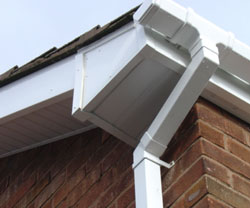Soffit Loft Ventilation
For a long time, it was generally accepted that air flowed in through one part of a ventilated loft and out of another. While this made it easy to explain how loft ventilation worked, more recent research has found that the way air actually flows through most lofts is in a much less uniform manner.
What’s the Point of Loft Ventilation?
Before you dive into figuring out which type of ventilation is going to provide you with the best results, it’s worth learning a little bit more about why you even need to ventilate your loft. There are two primary goals of loft ventilation. The first is to keep this area’s temperature under control. The other is to prevent too much moisture from accumulating in this space. The reason it’s important to control a loft’s temperature is because allowing this area to get too hot will have an impact on the rest of your home.
Not only will it impact the temperature throughout your home, but because energy will have to be used to bring your temperature back to its desired range, an unventilated loft can significantly increase your utility bill. When it comes to moisture, mold is the big reason that it’s important to prevent humidity levels from getting too high. If this issue is ignored and mold is allowed to grow, it can spread very quickly and be quite costly to remove.
What is the Best Way to Ventilate a Loft?
It’s worth noting that loft ventilation doesn’t need to be accomplished with just one type of vent. In fact, the best results usually come from using multiple types of vents in conjunction with each other. The top three options for ventilating a loft are:
- Ridge vents
- Baffles
- Soffit vents
Ridge vents allow air to blow through one side of a loft space and exit out of the loft’s other side. While this seems like all you need to ventilate a loft, the problem with only using ridge vents is they may not actually pull through much indoor air during the process of outdoor air being transferred from one side to the other. This one shortcoming is the reason that it’s important to use ridge vents in conjunction with baffles. By pairing these two up with each other, you can ensure the vents are pulling out the optimal amount of air.
How Do Soffit Vents Work?
Soffit vents are the other component of most successful ventilation arrangements. One of the reasons this type of vent works so well is because it can function as both an outlet and an inlet. Some homeowners are concerned that ventilating their loft area is going to lead to snow and rain getting into this space. However, because of the design of soffit vents, choosing this option will minimize the chances of that being an issue. When you’re deciding exactly where you should place this type of vent, it’s always a good idea to use them to complement any areas that have high vents.

Categories
- Home
- Types Of Loft Ventilation
- Attic Ventilation
- Heat Recovery Ventilation
- Industrial Loft Ventilation
- Loft Roof Space Ventilation
- Natural Ventilation
- Pigeon Loft Ventilation
- Positive Pressure Loft Ventilation System
- Proper Roof Ventilation
- Roof Ventilation
- Soffit Loft Ventilation
- Solar Ventilation
- Loft Ventilation Companies
- Loft Ventilation Information
- Loft Ventilation Products
